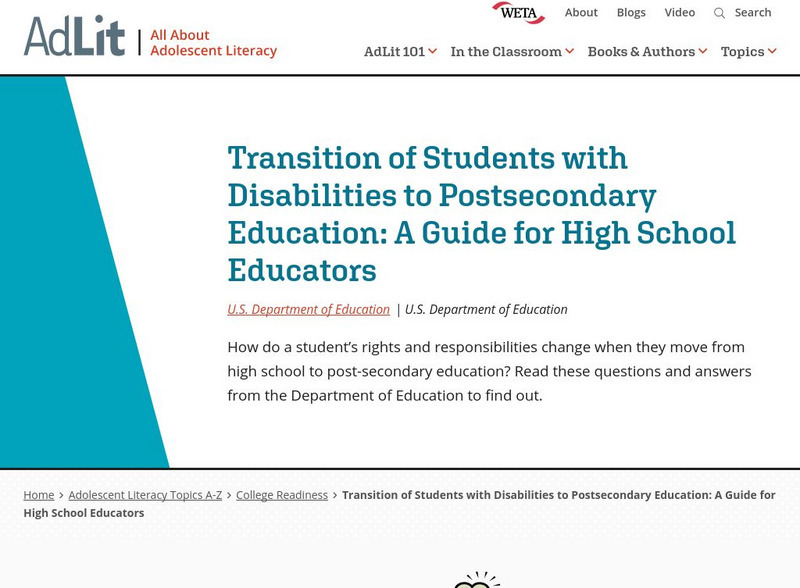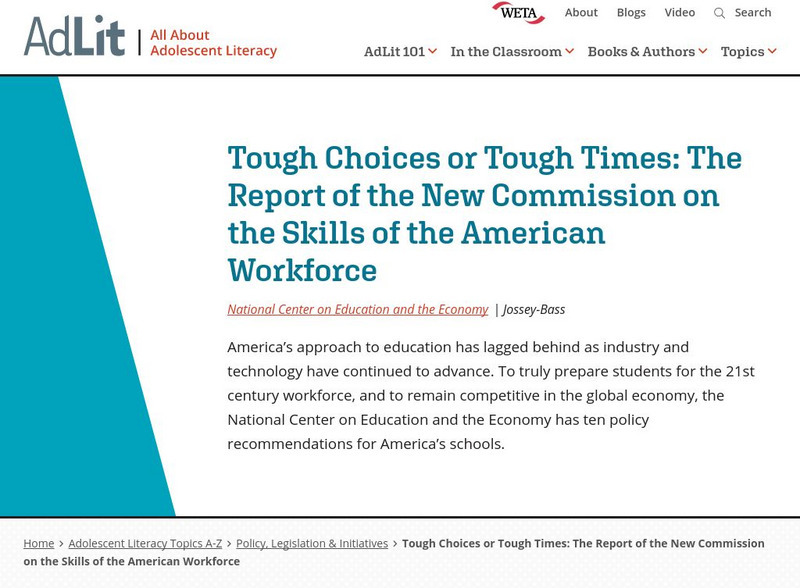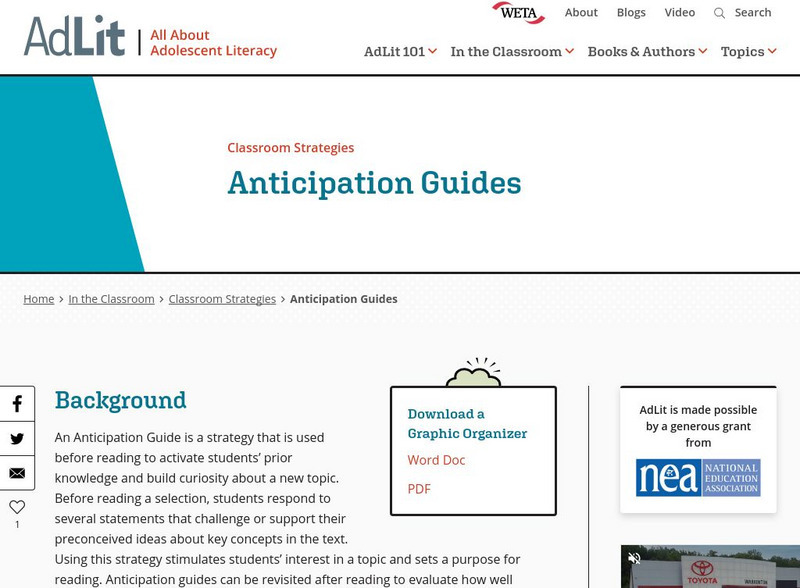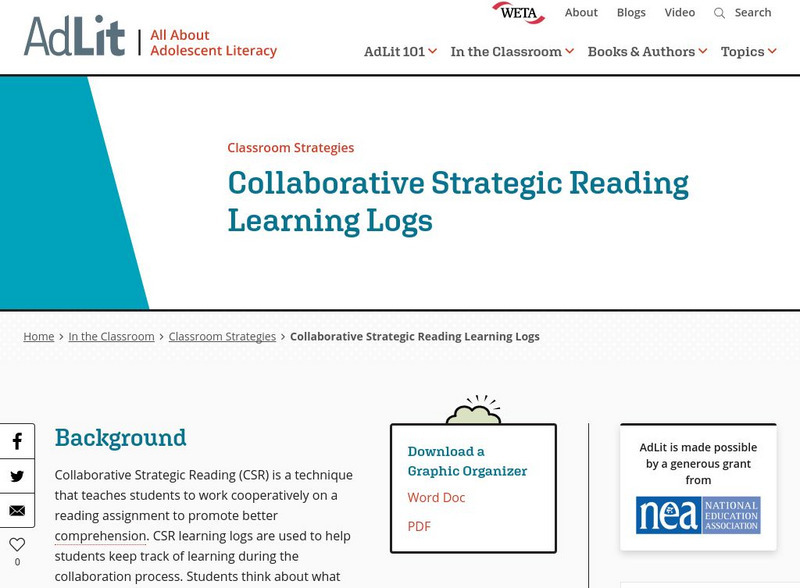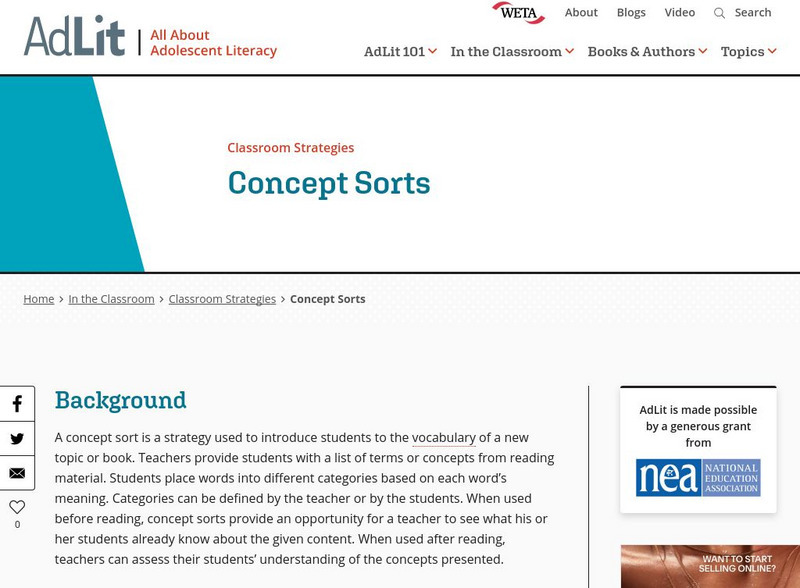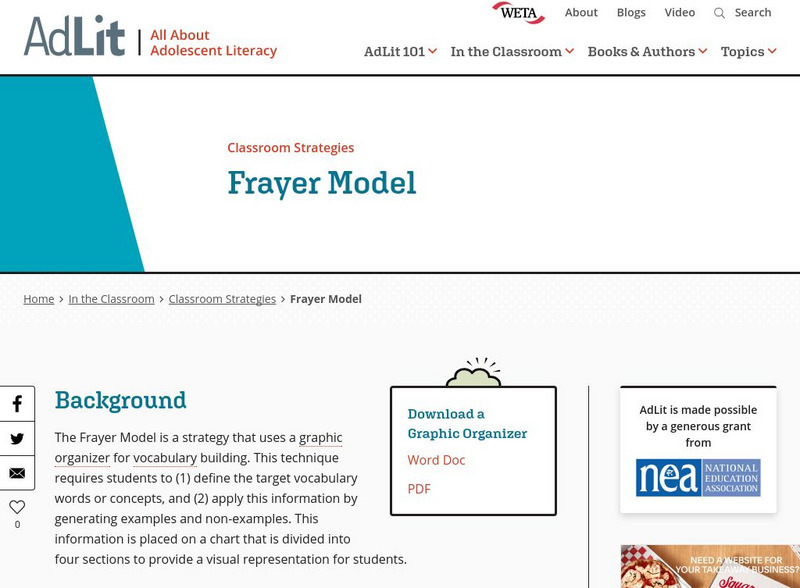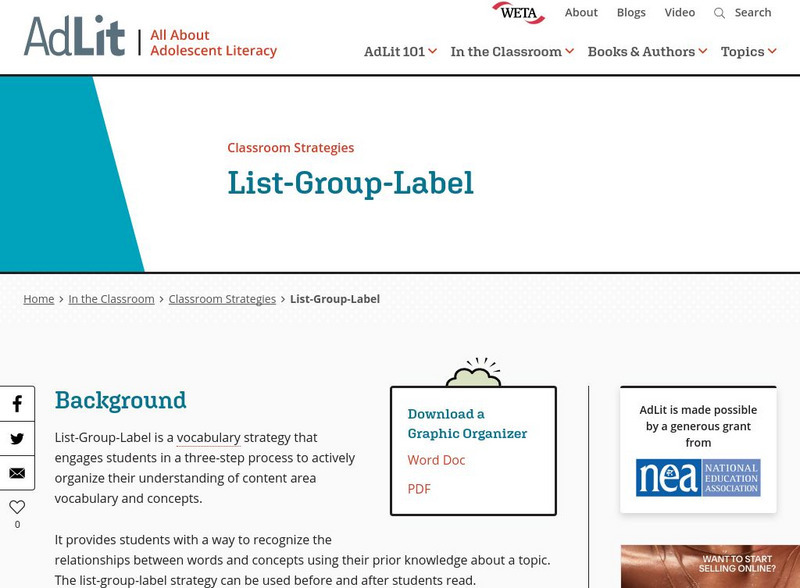AdLit
Ad lit.org: Transition of Students With Disabilities to Postsecondary Education
How do a student's rights and responsibilities change when they move from high school to post-secondary education? Read these questions and answers from the Department of Education to find out.
AdLit
Ad lit.org: Using Assistive Technology to Support Writing
Technology-and especially the subset of technology tools known as assistive technology-can be an effective element of the writing curriculum for students with disabilities. Assistive technology (AT) can be defined as a technology that...
AdLit
Ad lit.org: Understanding the School Counselor Parent Connection
School counselors work with teachers, administrators, and parents to help students with schoolwork and their social/emotional development.
AdLit
Ad lit.org: Tough Choices or Tough Times (Skills of American Workforce)
America's approach to education has lagged behind as industry and technology have continued to advance. To truly prepare students for the 21st century workforce, and to remain competitive in the global economy, the National Center on...
AdLit
Ad lit.org: Teacher Student Interactions: The Key to Quality Classrooms
The Classroom Assessment Scoring System (CLASS) describes ten dimensions of teaching that are linked to student achievement and social development. Each dimension falls into one of three board categories: emotional support, classroom...
AdLit
Ad lit.org: Tips on Starting a Community Service Project
A successful community service project is the result of clear objectives, thoughtful planning and coordination, savvy use of resources, and follow-through.
AdLit
Ad lit.org: Tips for Reading Tutors
The U.S. Department of Education developed this brief guide for reading tutors. It lists ways that tutoring helps both the learner and the tutor, and provides practical tips that can help tutors be more effective in their work.
AdLit
Ad lit.org: The Clarifying Routine: Elaborating Vocabulary Instruction
The more a new vocabulary word is associated with ideas from students' own experience, the more likely the word will become well 'networked' and a permanent part of memory. Making these links involves elaborating definitions of new...
AdLit
Ad lit.org: Teaching Writing to Diverse Student Populations
Writing is a complex operation requiring knowledge of text structure, syntax, vocabulary, and topic, and sensitivity to audience needs; so it is not surprising that many teens find writing challenging. This article identifies the...
AdLit
Ad lit.org: Understanding Why Students Avoid Writing
If parents and teachers understand why some students hate writing , they can targeted solution to address students' reluctance. Learn some reasons students avoid writing, and how increasing the automaticity of writing skills and...
AdLit
Ad lit.org: Use Cooperative Learning Groups to Engage Learners
When teachers structure cooperative learning groups as part of the overall reading program, they also open the door to a multiple intelligences approach to literacy, which is inherent in cooperative learning. This article offers guidance...
AdLit
Ad lit.org: Teaching Word Meanings as Concepts
The most effective vocabulary instruction teaches word meanings as concepts; it connects the words being taught with their context and with the students' prior knowledge. Six techniques have proven especially effective: Concept...
AdLit
Ad lit.org: What's the Big Idea? Integrating Young Adult Literature
Drawing on New York City teachers' experiences, this article examines three ways to effectively integrate young adult literature into the curriculum: use core texts (usually novels, but also other genres as well) that the entire class...
AdLit
Ad lit.org: What Schools and Students Can Do to Foster College Readiness
If schools and students understand college readiness in a more comprehensive way, they can do more to develop the full range of capabilities and skills needed to succeed in college. Click on Classroom Strategies on the left of the page...
AdLit
Ad lit.org: Why Students Think They Understand When They Don't
Students often think they understand a body of material and, believing that they know it, stop trying to learn more. But come test time, it turns out they really don't know the material very well at all. Can cognitive science tell us...
AdLit
Ad lit.org: Classroom Strategies: Double Entry Journals
The Double-Entry Journal strategy enables students to record their responses to text as they read. Students write down phrases or sentences from their assigned reading and then write their own reaction to that passage. The purpose of...
AdLit
Ad lit.org: Classroom Strategies: Paired Reading
The Paired Reading strategy encourages peer teaching and learning. Students are divided into pairs and read along together or take turns reading aloud to each other. Pairs can have the same reading ability or can include a more fluent...
AdLit
Ad lit.org: Classroom Strategies: Paragraph Shrinking
Paragraph Shrinking is an activity developed as part of the Peer-Assisted Learning Strategies (PALS). PALS is a classwide peer tutoring program in which teachers carefully partner a student with a classmate. The Paragraph Shrinking...
AdLit
Ad lit.org: Classroom Strategies: Anticipation Guides
An Anticipation Guide is a strategy that is used before reading to activate students' prior knowledge and build curiosity about a new topic. Before reading a selection, students respond to several statements that challenge or support...
AdLit
Ad lit.org: Classroom Strategies: Collaborative Strategic Reading Learning Logs
Collaborative Strategic Reading (CSR) is a technique that teaches students to work cooperatively on a reading assignment to promote better comprehension. CSR learning logs are used to help students keep track of learning during the...
AdLit
Ad lit.org: Classroom Strategies: Concept Sorts
A concept sort is a strategy used to introduce students to the vocabulary of a new topic or book. Teachers provide students with a list of terms or concepts from reading material. Students place words into different categories based on...
AdLit
Ad lit.org: Classroom Strategies: First Lines
First Lines is a strategy in which students read the beginning sentences from assigned readings and make predictions about the content of what they're about to read. This pre-reading technique helps students focus their attention on what...
AdLit
Ad lit.org: Classroom Strategies: Frayer Model
The Frayer Model is a strategy that uses a graphic organizer for vocabulary building. This technique requires students to (1) define the target vocabulary words or concepts, and (2) apply this information by generating examples and...
AdLit
Ad lit.org: Classroom Strategies: List Group Label
It provides students with a way to recognize the relationships between words and concepts using their prior knowledge about a topic. The list-group-label strategy can be used before and after students read.
